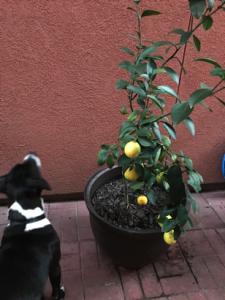 Sincere questions can show a desire for a relationship and a mind still awake to possibilities. We ask, because the beauty, the truth, and the goodness are there and we most often must get consent to go there.
Sincere questions can show a desire for a relationship and a mind still awake to possibilities. We ask, because the beauty, the truth, and the goodness are there and we most often must get consent to go there.
One reason we miss objective beauty is that we think beauty is something in us, in the eye of the beholder. If we see beauty, we think that the beauty itself is merely our feelings: beauty is in us. We see a rose and the beauty attracts us to the rose. If not careful, the next thought will be “I should have that rose.” Our proclaiming the rose “beautiful” (based on our subjective opinion) somehow makes the rose ours when all we have done is correctly identify a quality in something else.
Making this mistake is far worse when done with people. When we see beauty in a person, the beauty is his or her very own beauty. We can admire that beauty, but our recognition gives us no claim to the beauty. Beauty is real, in the object or person we are seeing, and this beauty stirs love in us. This is good and appropriate. If we merely could thank God for beauty, and praise the beautiful, then all would be well. Instead, we think we have done something to change or glorify the object by our attribution of beauty to the object. This is crazy. After all, knowing an object is six feet tall does not gives us some right or relationship to the object! Recognizing a quality in something or someone changes us but need not change the object or person we observe.
The most beautiful manmade object I have ever seen is Michelangelo’s statue David. When I walked down the corridor toward the statue, I lost track of everything else in the room. The beauty is there and even though I do not understand the intricacies of sculpture or all of the message of the David, I marveled. This thing was beautiful.
I noticed, however, that there was a strong temptation to rush off and buy a cheap imitation of the statue. There was a gift shop to the right of the great monument and most tourists rushed from “seeing” to buying. They would take the art home in the form of a plastic imitation, a refrigerator magnet, or puzzle!
The David is beautiful, and beauty creates desire, but in a healthy soul there is a recognition when the object of desire is not for me. The David belongs in Florence. Michelangelo designed this work to make a statement about the city of Florence, the papacy, and political power. I love Houston, but the David does not belong in Houston even if Houston is now bigger, richer, and more powerful than Florence.
Even if we could buy it, we almost surely should not.
The David does not belong in my house. The real sculpture would not fit. The feet would be on my first floor and the head in the third! Having an image to recall the beauty of the original might be acceptable if the imitation has a beauty of its own. Still, there is something odd, inauthentic, about a copy of beauty and my desire to own that copy.
Why not commission some new work of art from a student at the College? If the beauty of the David makes us long for more beauty in Houston, then let us create more beauty in Houston that is authentic to Houston. Beauty shows us a lack of something desirable. This creates desire, but desire can be inappropriate, like wishing to own David or to take this amazing work of art out of its natural context.
The beauty of David was Michelangelo’s gift to Florence and the beauty loses context elsewhere.
Museums also rend beauty just this way, think of the Elgin marbles cut off from the Greeks, from Athens, from the blue sky where they should be framed. I am thankful that the English may have saved them from physical destruction, but this came at the cost of spiritual destruction. Beauty is not for buying, but for appreciation and when beauty is looted or acquired, then beauty is partially lost.
With humans, the issue is even more serious. Each person owns his or her own beauty, since that objective reality is a gift to them from the good God. We can see, appreciate, love, sense our own need for beauty, but that does nothing to give us “ownership” or right to that beauty.
We are not beautiful when we see beauty in the beloved. We merely acknowledge what is real. Justice would allow us a private veneration, but nothing more. The world is alive with beauty that is not our own, not for us, but there to be acknowledged and loved.
This superabundance of beauty is good if we (God forgive us!) acknowledge that this beauty is not “our own.” We can, of course, look to self, know ourselves, and see the beauty that is within us. This beauty is God’s gift to us, and we can, or cannot, gift this beauty to some beloved.
Mostly, however, we see that the superfluidity of beauty is for general joy, not particular to ourselves, and so we rejoice in the Lord of Beauty. Any particular joy belongs to God and to the person, or thing, to which God has granted beauty. In aggregate, we can rejoice in the beauty of creation. We must “take” beauty only with consent in persons, or with great care in “things.”
We learn what beauty is, how to love appropriately, and learn boundaries. This is a lesson I learned later than I wished I had, but a lesson that must be learned, nonetheless, if one is to be happy. There can be no happiness for the person who seizes any beauty that is not his own. There can be little happiness for the man who does not see the vast amount of beauty in the cosmos or for the person who sees that beauty and thinks the beauty is his own to have.
We must rejoice in abundance without desiring all for self. This is very hard to do and so life becomes an education.











